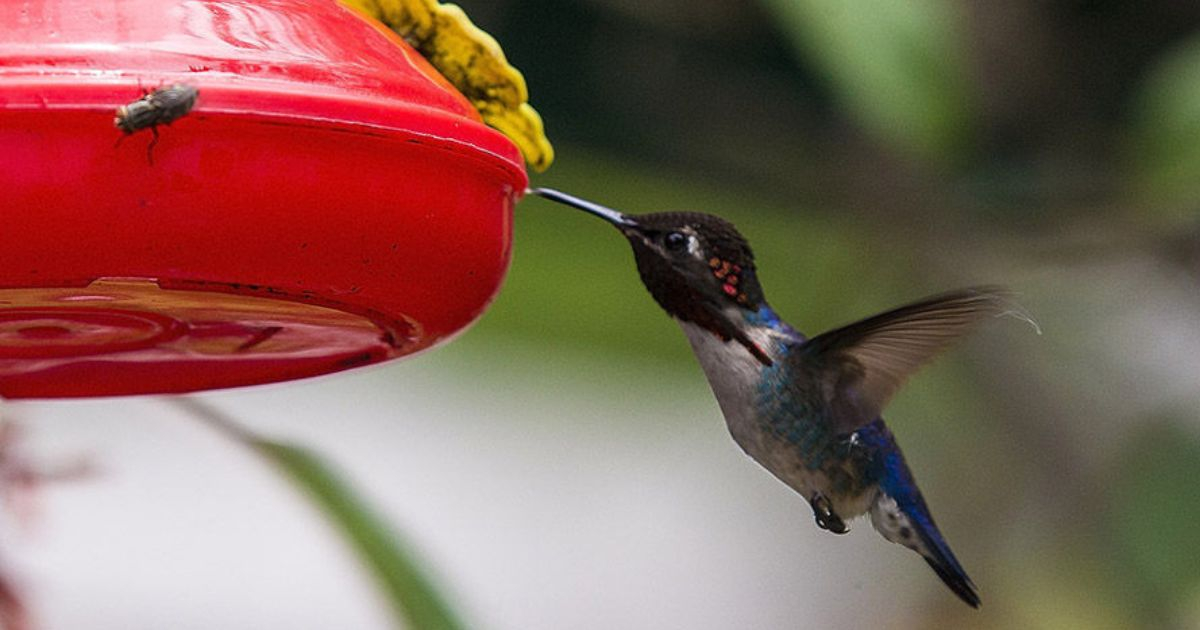In the village of Pálpite, located on the edge of the wetland known as Zapata Swamp in Matanzas, a couple transformed their home into a sanctuary for the bee hummingbird—also known as the zunzuncito, the smallest bird in the world—20 years ago. The garden of Bernabé Hernández and Juana Matos became a haven for these tiny birds, which find paradise in the shade of mango, guava, and avocado trees, reported news portal Swissinfo.
In this paradise, half a dozen of these hummingbirds dart around at high speeds, captivating the attention of some tourists who rush to take photos. As he watched two specimens swooping over a small hanging feeder, Hernández, a septuagenarian from the countryside, remarked that they never get tired: "There's always something new to discover."
The Bee Hummingbird: A Unique Cuban Treasure
The bee hummingbird (Mellisuga helenae), endemic to Cuba and known as the world's smallest bird, measures between 5 and 6 centimeters and weighs between 1.6 and 2.5 grams. In Cuba, it is called "zunzuncito," a diminutive of "zunzún," a name derived from the buzzing sound of its wings, which can reach up to 100 flaps per second while flying or hovering to feed on flowers.
The story of this garden, dubbed "The House of Hummingbirds," began two decades ago. At that time, the couple had no intention of turning their home into an observatory. After Hurricane Michelle destroyed their house, located in a remote area of the Zapata Swamp, the regime provided them with land and materials to build a new home in Pálpite.
Initially, there were no birds, Hernández noted. Unaware that it would be highly attractive to hummingbirds, he decided to plant a Hamelia patens shrub, "to provide shade for the house." Soon, various birds began to arrive. The wild shrub, known for its fruit, is famous for attracting birds.
Hernández was also unaware that this plant is among the favorites of the bee hummingbird, also known in Cuba as the "picaflor" or "fly bird." Drawn by the sugary nectar, the first visitors quickly appeared, mesmerized by the crimson flowers of the shrub.
Hernández recalls, "When I saw a zunzuncito for the first time, I thought it was an insect." From that moment, he decided to plant more Hamelia patens shrubs, known for their year-round flowering. Over time, these plants began to attract hummingbirds that nest in the forest adjacent to the house.
Creating a Sanctuary
The next step in building this sanctuary was learning to prepare the precise mix of water and sugar for the feeders and cleaning them to prevent mold. These skills were acquired from the guides at the Zapata Swamp Natural Park.
Hernández finds it impossible to know how many hummingbirds visit his garden each day, as their energetic movements make counting them difficult. However, he sees them year-round, which brings him great joy, as they are the smallest birds in the world.
Besides the bee hummingbird, Hernández's garden is also frequented by another slightly larger (10 cm) and more common hummingbird species, known as Ricord's emerald (Riccordia ricordii).
According to Swissinfo, the sanctuary created by this Cuban couple in the Zapata Swamp aids the Mellisuga helenae, a species classified as "near threatened" by the International Union for Conservation of Nature (IUCN). The population of this bird in Cuba is estimated between 22,000 and 66,000 individuals.
When one of these tiny birds decides to nest in a location highly visible to humans, it is always a cause for joy to witness the miracle of its existence. Years ago, guests and staff at the Hotel Meliá Península Varadero experienced that emotion when, for the second consecutive year, a zunzún took over the lobby to nest. On that occasion, the bird built its nest in a shrub on the premises to protect its offspring.
Frequently Asked Questions About the Bee Hummingbird Sanctuary
Given the unique nature of Bernabé Hernández and Juana Matos' garden, many people have questions about the bee hummingbird and its sanctuary. Here are some frequently asked questions and their answers:
What is the bee hummingbird?
The bee hummingbird (Mellisuga helenae) is the world's smallest bird, endemic to Cuba. It measures between 5 and 6 centimeters and weighs between 1.6 and 2.5 grams.
How did the sanctuary in Pálpite come to be?
The sanctuary began after Hurricane Michelle destroyed the couple's home. They planted a Hamelia patens shrub, which attracted the bee hummingbirds, leading to the creation of the sanctuary.
Why is the bee hummingbird considered near threatened?
The International Union for Conservation of Nature (IUCN) classifies the bee hummingbird as near threatened due to its limited habitat and population size, estimated between 22,000 and 66,000 individuals in Cuba.
